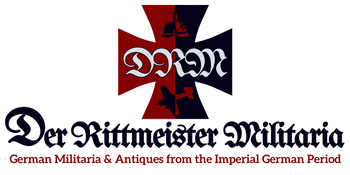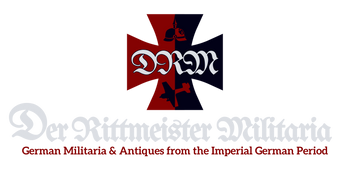Anhalt (Herzogtum Anhalt)
CLICK HERE FOR ALL PRODUCTS RELATED TO ANHALT
Basic Information
- Official Name: Duchy of Anhalt (Herzogtum Anhalt)
- Capital: Dessau
- Motto: "Fürstlich und Treu" (Princely and Loyal)
- Established: 1863 as a unified duchy (earlier divided into smaller principalities such as Anhalt-Dessau and Anhalt-Bernburg)
- Dissolution: Transitioned to the Free State of Anhalt in 1918 following the abdication of Duke Joachim Ernst.
-
Key Symbols:
- Coat of Arms: Features a golden bear on a black and gold field, symbolizing strength and perseverance.
- Flag: Black, gold, and green horizontal stripes.
Geographical Overview
-
Location:
Anhalt was located in central Germany, surrounded by Prussia and bordered by the Elbe River to the north. -
Size:
A small state known for its fertile plains, forests, and rivers. Major cities included Dessau, Köthen, and Bernburg. -
Land Features:
- Elbe River: Played a significant role in trade and agriculture.
- Harz Mountains: Provided minerals and natural beauty in the southern regions.
- Biosphere Reserves: Known for its forests and efforts in environmental preservation.
Historical Timeline
-
Early Anhalt:
- 1212: Established as a principality under the Ascanian dynasty.
- 17th Century: Fragmented into smaller territories, including Anhalt-Dessau, Anhalt-Bernburg, and Anhalt-Zerbst.
-
Unified Duchy of Anhalt (1863–1918):
- 1863: Reunited under Duke Leopold IV Friedrich after the extinction of the Anhalt-Bernburg line.
- 1871: Became part of the German Empire while retaining its internal autonomy.
-
Decline (1918):
- The abdication of Duke Joachim Ernst during the German Revolution marked the end of the duchy, transitioning into the Free State of Anhalt.
Notable Rulers and Leaders
- Leopold I (1693–1747): Known as the "Old Dessauer," a military leader who modernized the Prussian army while ruling Anhalt-Dessau.
- Leopold IV Friedrich (1863–1871): Unified Anhalt as a duchy and brought political stability.
- Joachim Ernst (1904–1918): The last Duke of Anhalt, whose rule ended with the German Revolution.
Military and Political Strength
-
Military Contributions:
- Anhalt contributed regiments to the Imperial German Army, known for their discipline and effectiveness.
- Played a supporting role in Prussia’s military campaigns during the German unification wars.
-
Political Role:
- Governed as a constitutional monarchy under the House of Ascania.
- Represented in the Bundesrat (Federal Council) of the German Empire.
Cultural Contributions
-
Architecture:
- Dessau-Wörlitz Garden Realm: A UNESCO World Heritage Site, reflecting Enlightenment ideals in landscape design.
- Bernburg Castle: A Renaissance fortress overlooking the Saale River.
-
Arts and Literature:
- The duchy supported composers like Carl Friedrich Abel and literary figures tied to the Enlightenment.
- Hosted cultural gatherings in Dessau that fostered Romantic art and music.
-
Education and Science:
- Dessau became a hub for education, particularly in engineering and technical sciences.
- Supported early research in forestry and environmental science.
-
Cuisine:
- Known for hearty stews like Bernburger Kartoffelsuppe and baked goods such as Anhaltischer Streuselkuchen (crumb cake).
Fall of Anhalt
-
World War I (1914–1918):
- Anhalt faced economic hardship and food shortages due to its reliance on agriculture.
-
German Revolution (1918):
- Duke Joachim Ernst abdicated, and Anhalt transitioned to a republic.
-
Post-WWII (1945):
- Incorporated into Saxony-Anhalt under East German administration and later became part of reunified Germany.
Connections to Products
-
Cultural Artifacts:
- Items from the Dessau-Wörlitz Garden Realm, including artistic reproductions of its landscapes.
- Commemorative pieces featuring Bernburg Castle or other historic sites.
-
Military Memorabilia:
- Medals and insignia from Anhalt regiments in the Imperial Army.
- Uniforms and swords tied to the House of Ascania.
-
Historical Documents:
- Maps and treaties detailing the unification of Anhalt and its governance under the German Empire.
- Papers and manuscripts from Enlightenment thinkers tied to Dessau.
-
Tourism and Culinary Items:
- Guidebooks and postcards featuring Anhalt’s castles and gardens.
- Cookbooks and tools for preparing traditional Anhalt dishes.
-
Environmental Legacy:
- Memorabilia related to the biosphere reserves and conservation efforts in Anhalt.







